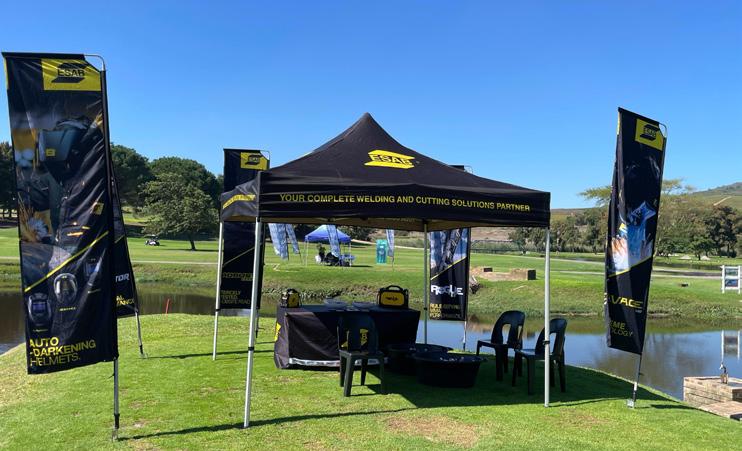

THE TAXING TRUTH ABOUT TARIFFS
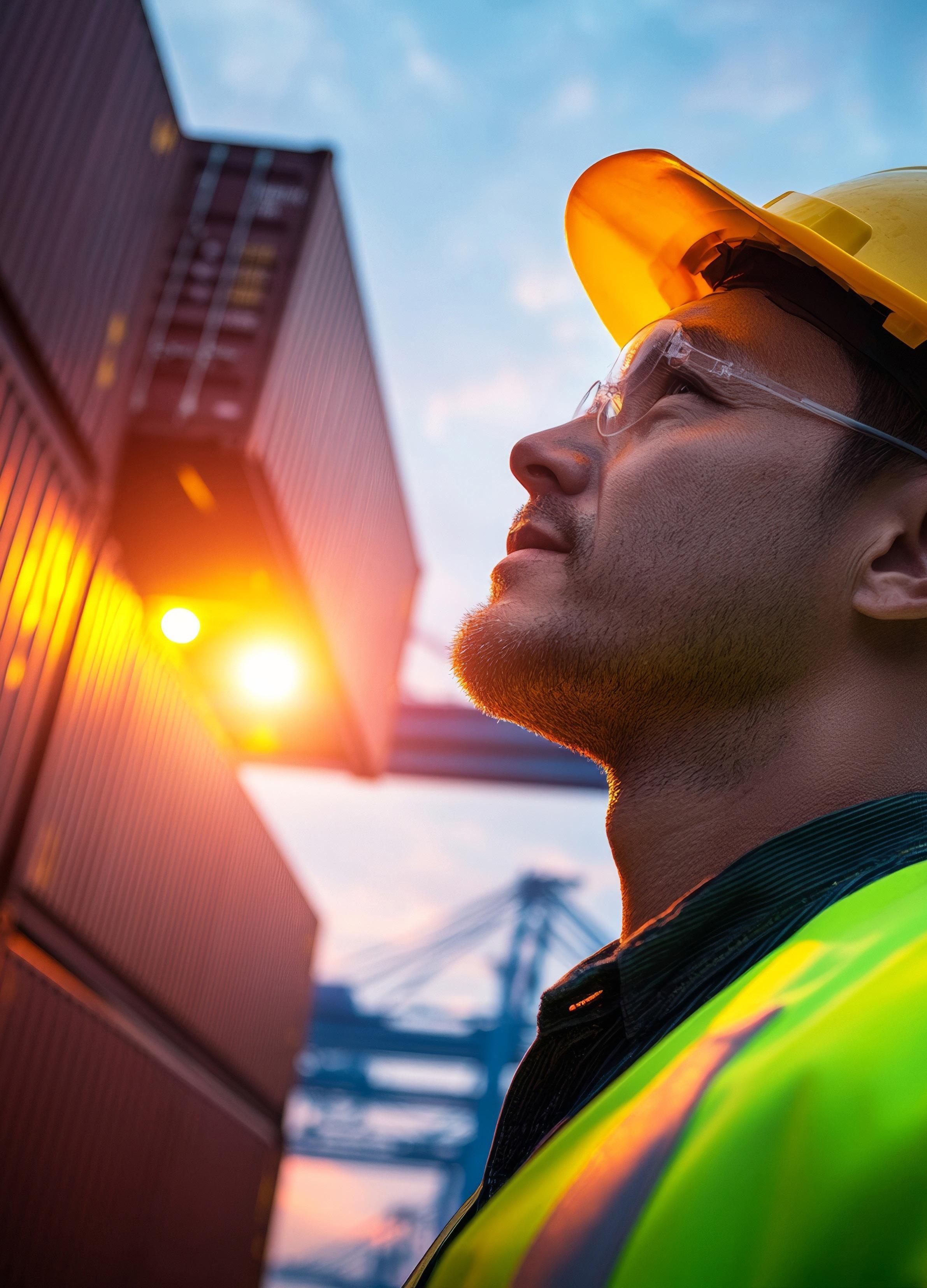
CORROSION LESSONS from the Dead Sea
SA’S WATER
SECURITY
lies in stainless steel



Headline Sponsor


Sassda Perspective
Pressure, Purpose & Possibility
GPS Roundup
Market Intelligence to Boost Business Growth
Sassda News
Fair Trade or Foul Play? The Taxing Truth About Trade Tariffs
State of the Stainless Steel Nation
South Africa Faces a Double Threat: Steel Job Losses and Rising Trade Barriers
Technical Insight
Stainless Steel and South Africa’s Water Crossroads
Professional Profile
17
23 21
The Stainless Steel Strategist: Pierre Rootman’s Game Plan for Growth 1 3 6 9 12 15 27 28 25
Technical Insight
Can Mild Steel Survive Where Stainless Fails? Lessons From the Depths of the Dead Sea
Member News
Cronimet’s 30-Year Sustainable Journey
Market Intelligence
Angola Steps Up: Energy Investments Drive Momentum & Demand for Stainless Steel
Member News
Smarter Welding, Stronger Growth: Coalition Engineering Teams with Sassda
Member News
A Smarter, Safer Approach to Stainless Steel Weld Cleaning
Member News
Western Cape Golf Day Drives Industry Connections

Pressure, purpose and possibility industry perspective
Contact us
TELEPHONE NUMBER 011 883 0119
EMAIL info@sassda.co.za
WEBSITE www.sassda.co.za
Sassda
MICHEL BASSON Executive Director michel@sassda.co.za
CALLUM SUTHERLAND
Members & Communication callum@sassda.co.za
MANKABE MORE Education & Training mankabe@sassda.co.za
TEBOGO NKWE
Market Intelligence & Lobbying Tebogo@sassda.co.za
KIM STEVENS
Events, Email Marketing and Website kstevens@sassda.co.za
JOSE HERON Accounts jose@sassda.co.za
LUISE ALLEMANN
Content, Social Media and the Stainless Steel Magazine luise@mediaink.co.za
The Stainless steel magazine is published quarterly and is distributed to stockists, distributors, fabricators, specifiers, consulting engineers, architects, mining, petrochemical and chemical industries, food beverage and pharmaceutical industries, consumer outlets, end-users, educational institutes and provincial and government departments. Sassda makes every effort to ensure the accuracy of the contents of its publications, but no warranty is made as to such accuracy and no responsibility will be borne by the publisher or Sassda for the consequences of any actions based on information so published. All opinions, views and expressions contained in this publication are not necessarily those of the management of Sassda. The contents of this publication enjoy positive protection under the Copyright Act and therefore copyright thereof is expressly reserved. Any copying, publication and distribution of part or whole of the publication is prohibited unless consent is granted by Sassda.

Welcome to the second issue of Stainless Steel magazine for 2025. As we move further into a year already marked by both pressure and possibility, this edition brings together sharp insights and grounded optimism. Whether you’ve been with us since our relaunch in 2020 or are are reading our magazine for the first time, we hope you find this edition not only relevant but resonant.
There’s no sugar-coating it: the global trade environment is tightening, and South Africa is feeling the squeeze. This issue digs into the complexity of tariffs and trade barriers that have become front-page concerns. With the threat of new U.S. tariffs on key South African exports, including stainless steel components tied to the automotive and agricultural sectors, we’re no longer talking hypotheticals. We’re staring down decisions that affect jobs, market access, and the future of industrial investment.
At the same time, uncertainty still hangs over the ArcelorMittal long-products division. A state-backed intervention has bought some time and saved thousands of jobs for now, but the bigger questions remain unanswered. Many across the sector are holding off on major investment decisions, waiting for policy clarity and strategic direction.
And yet, in this tension lies opportunity. Europe has reaffirmed its support for South Africa, and regional markets across Africa present openings we’d be wise not to overlook. That’s why we’ve put Angola in focus for this issue’s African Country Profile. With AGOA on shaky ground and traditional markets increasingly complex, it’s time to get serious about intra-African trade, not just as a Plan B, but as a core part of our growth strategy.
In contrast to the big-picture trade stories, we also zoom in on what makes this industry adaptable: technical insight and material intelligence. Our article on stainless steel’s role in South Africa’s water infrastructure crisis is a case in point. With nearly half of the country’s water systems rated high or critical risk, there’s simply no room for short-term fixes. Stainless steel, with its durability and corrosion resistance, is more than just a smart choice - it’s a necessary one if we’re to build infrastructure that lasts.
And from the depths of the Dead Sea comes a lesson that challenges assumptions. Could mild steel ever outlast stainless in the right environment? It turns out, in oxygenstarved, high-salinity conditions, yes…sometimes. It’s a reminder that engineering excellence isn’t about defaulting to what’s familiar; it’s about knowing when, where, and why one solution works better than another.
Of course, no edition would be complete without celebrating the spirit that drives this sector forward. Our Passionate About Stainless feature continues to spotlight the people and projects shaping the industry’s future. And we bring you reflections from a successful Laser Welding Conference and an energised Cape Town Golf Day -proof that even in tough times, this industry shows up with strength and connection.
So, with first quarter of the year well behind us, we turn the page on the first half of the year and face the next with clarity. The economic outlook may be cautious, but our industry has never waited on perfect conditions to make progress. If anything, we’ve built our resilience by leaning into challenge, and this year will be no different.
Michel Basson, Sassda Executive Director
industry perspective


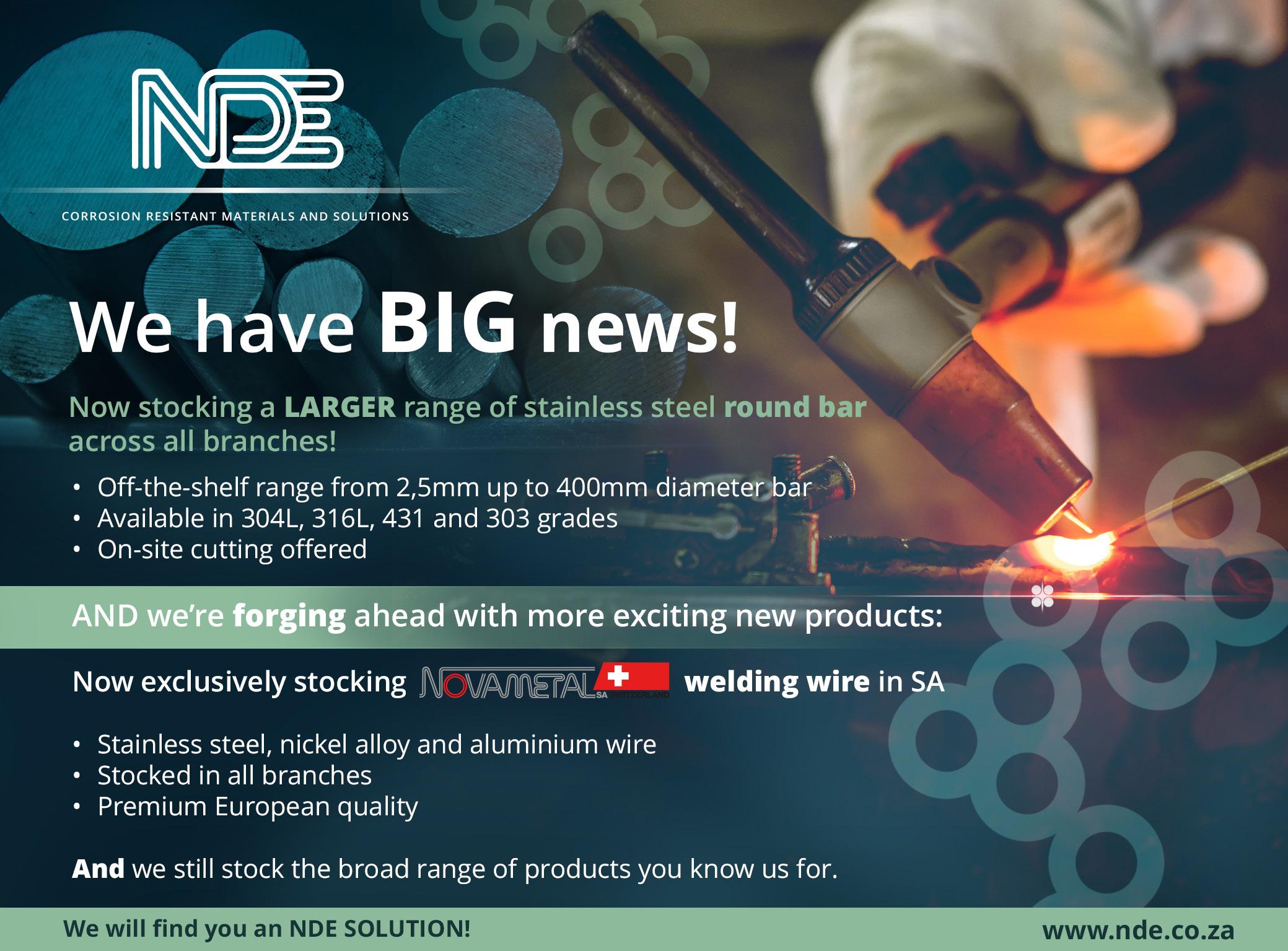

Market intelligence to boost business growth
Welcome to the highlights edition of the Sassda GPS eNewsletter, your go-to source for key developments shaping South Africa’s business, industrial, and economic landscape. Each month we distribute this popular market intelligence aggregator to an exclusive database of members and associates. This magazine edition aims to extend the access to this quality content by prioritising the top stories from the latest issues to ensure that you stay ahead with the most current insights.

Eskom Must Be Given ‘Space’ to Pursue Renewables Strategy
Eskom CEO Dan Marokane has appealed for the utility to be given operational freedom as it rolls out its renewable energy strategy. The plan, part of South Africa’s Just Energy Transition, is intended to support vulnerable communities while modernising the country’s power grid. Marokane clarified that Eskom is not seeking to dominate the space, but rather to complement private sector efforts. This shift will create new infrastructure needs - many of which align with the use of stainless steel in transmission and generation systems.….Read more

Tariff Fallout: Auto Sector Still Faces 55% Duty Threat
Despite some relief from US reciprocal tariffs, the automotive industry still faces steep duties of up to 55% if broader trade hostilities resume. A 25% tariff already applies to cars and parts, key export items for South Africa. Business Leadership SA’s Busisiwe Mavuso has warned that global supply chain risks remain high, especially for manufacturers tied to international markets.….Read more

South Africa Eyes Formal Trade Deal After US Tariff Pause
Trade Minister Parks Tau has confirmed that South Africa has been removed from the US reciprocal tariff list, providing a short-term reprieve for exporters. However, base tariffs on steel-intensive sectors such as automotive remain. The Department of Trade, Industry and Competition is now advancing talks on a formal trade deal with the US to secure long-term access and avoid future disruptions. This could directly affect the export viability of stainless steel components in vehicles and industrial products....Read more


Exxaro’s R11.67bn Manganese Acquisition Marks Major Diversification Move
Exxaro Resources, South Africa’s largest coal producer, has announced a landmark R11.67 billion acquisition of key manganese assets, including stakes in the Tshipi Borwa and Mokala mines located in the Northern Cape’s Kalahari Manganese Field. This strategic move aligns with Exxaro’s Sustainable Growth and Impact strategy, aiming to diversify its portfolio beyond coal and into critical minerals essential for the green economy. Manganese plays a vital role in steel production and is increasingly important in battery technologies. By leveraging its expertise in open-pit mining and beneficiation, Exxaro positions itself to become a significant player in the global manganese market, contributing to South Africa’s prominence in supplying this critical resource.... Read more
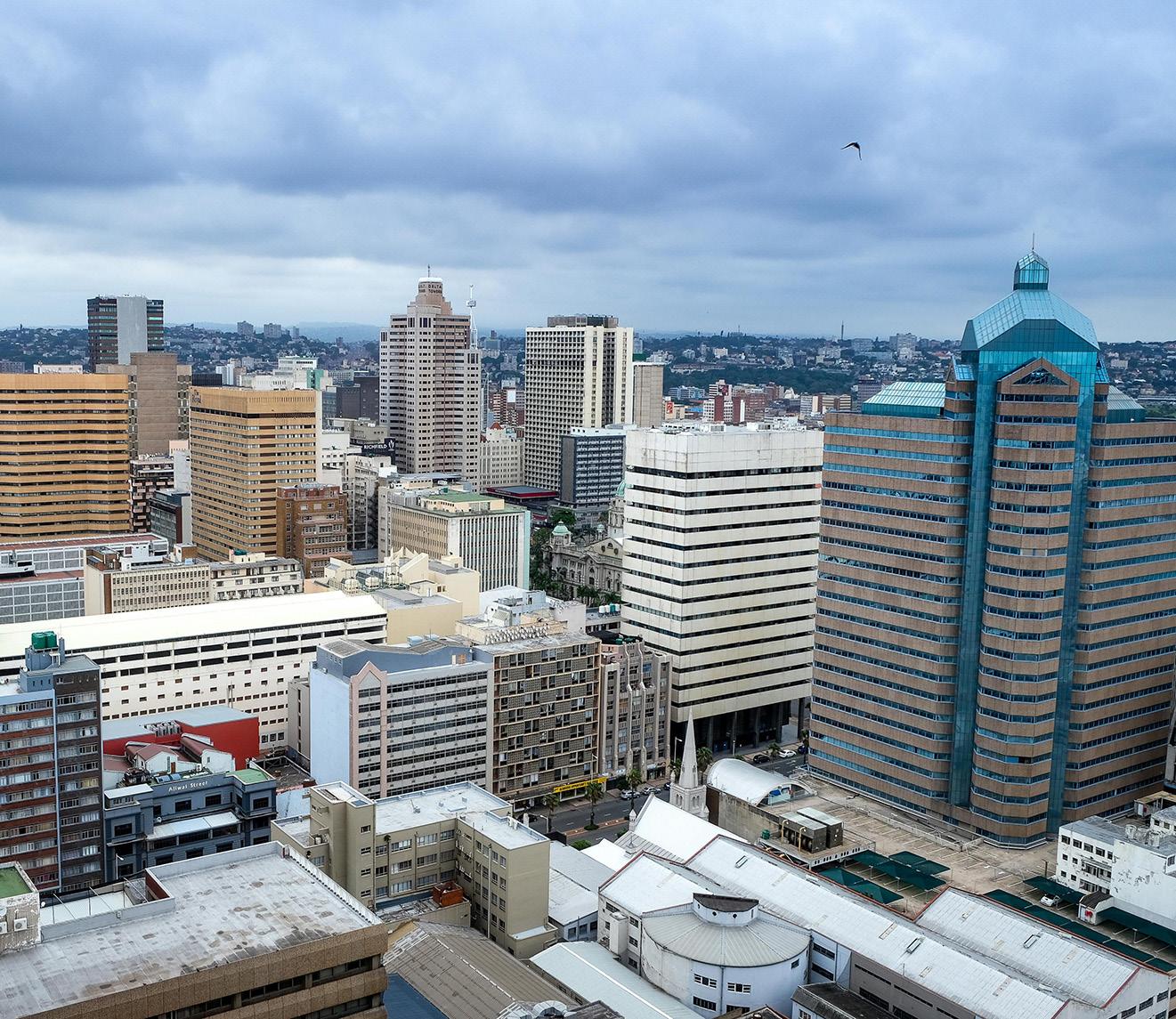
70 000 Jobs at Risk as South Africa Faces Looming Gas Crisis
South Africa is heading toward an energy shock that could destabilise key sectors and cost 70 000 jobs. The threat stems from declining gas supplies from Mozambique, which could run dry by 2026. Without a replacement strategy, major industrial operations reliant on natural gas may be forced to scale down or shut operations. The knock-on effect would be severe, with 5% of GDP and a significant portion of energyintensive manufacturing at stake. This unfolding crisis is a stark reminder of the country’s need to future-proof its energy mix and the stainless steel sector must prepare for both disruption and opportunity in the energy transition.contributing to South Africa’s prominence in supplying this critical resource.…Read more

Is Infrastructure the Lifeline of South Africa’s Government of National Unity?
As South Africa enters a new phase of political cooperation under a Government of National Unity (GNU), infrastructure has taken centre stage. In his State of the Nation address, President Cyril Ramaphosa did not mince words, stating that basic services in many towns and cities are failing. Roads remain unrepaired, power and water cuts are common, waste removal is inconsistent, and raw sewage flows through residential streets. These realities underscore the urgent need for infrastructure renewal if the GNU is to succeed in its mandate. For the stainless steel industry, this signals a period of potential demand as essential projects in transport, energy and sanitation come into focus...Read more

South Africa Approves First Renewable Energy Masterplan
The South African Cabinet has adopted its first Renewable Energy Masterplan - a pivotal policy framework aimed at transitioning the economy away from coal, which currently accounts for 85% of electricity generation. The plan outlines strategies to build domestic industries around solar, wind and battery technologies, while also emphasising job creation and local economic benefits. This shift opens new avenues for stainless steel in renewable energy applications, from structural components to corrosionresistant systems.….Read more

World Bank and South Africa Unveil R55bn Plan to Revitalise Cities
South Africa has secured a substantial R55-billion funding agreement with the World Bank to address urban infrastructure decay across eight major cities, including Johannesburg, Cape Town and Durban. The initiative will finance upgrades to critical services - water, electricity, sanitation and waste management - while introducing performance-based incentives to improve municipal accountability. For industry players, especially in construction and materials, this initiative signals a substantial increase in infrastructure demand and spending....Read more
Creecy Unveils Private Sector Role in Revitalising Rail and Port Infrastructure
Transport Minister Barbara Creecy has launched a Request for Information to draw private-sector participation into South Africa’s rail and port revival. Years of neglect have crippled logistics efficiency, affecting everything from mining exports to industrial deliveries. The proposal aims to attract investment into high-impact upgrades, which could unlock export competitiveness and stabilise supply chains across steel and stainless steel markets....Read more

New Steel Mills Could Reboot Industry, Save Jobs
Simon Norton of the International Zinc Association is calling for partial subsidies to build new steel mills in South Africa - arguing this could revitalise the domestic steel and stainless steel sectors, protect jobs, and support local production. With several older plants under threat and rising import pressure, new mills would strengthen supply chains and help meet growing demand across construction, energy and transport.…Read more

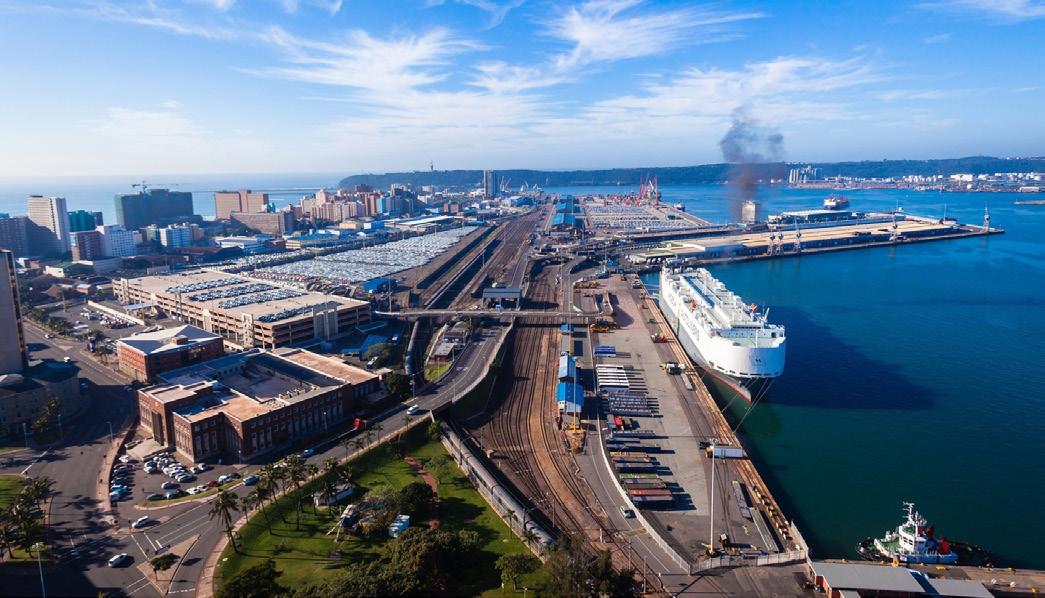


Fair Trade or Foul Play? The Taxing Truth About Trade Tariffs
Based on a large number of enquiries and understandable concern from our members, Sassda Executive Director Michel Basson unpacks the impact of tariffs and trade barriers on South Africa’s stainless steel value chain. What’s clear is that with input costs rising; global competition intensifying, and local industries under pressure, an economic battle is underway, and the role of duties and protective measures is under scrutiny like never before…
What Are Tariffs?
Tariffs are a type of trade barrier that makes imported goods more expensive than local ones. Typically, they take the form of taxes or duties placed on imports, costs which are eventually passed on to consumers. Tariffs are commonly used as protectionist tools in international trade.
Key points to remember:
Tariffs are a form of protectionist trade barrier applied in various ways.
• They are paid by domestic consumers, not the exporting country.
Tariffs raise the relative prices of imported goods. Other trade barriers include quotas, licensing, standardisation rules, and local content requirements
. These tools also make foreign goods more expensive or harder to access, giving local products a competitive edge.
Why Are Tariffs and Trade Barriers Used?
1. Protecting Local Jobs
Tariffs can shield local industries from foreign competition. Without such protection, cheaper imports may force local businesses to cut jobs or move production abroad. While this may save jobs in the short term, it can harm longterm growth if local productivity doesn’t improve. Artificial protection often results in inefficient industries that can’t compete globally.
2. Protecting Consumers
Governments may impose tariffs on products considered unsafe or hazardous. For example, a tariff on imported food could be introduced if there’s concern about contamination or disease.

market intelligence
3. Supporting Emerging Industries
Developing economies sometimes use tariffs to protect start-up or sensitive industries. This raises import prices and encourages local production, with the goal of reducing unemployment and moving up the value chain. However, this strategy can be risky. Without competition, protected industries may produce poor-quality goods at higher prices. Subsidies to keep these industries afloat can also divert resources from more deserving sectors.
4. National Security
Certain industries especially those related to defence - are considered strategically important. Developed countries often use tariffs to protect these sectors.
5. Retaliation
Tariffs are sometimes used as a tool of retaliation. For instance, if France believes another country mislabels its local sparkling wine as “Champagne,” it might impose tariffs on goods from that country in response.
Common Types of Tariffs and Trade Barriers
Specific Tariffs
A fixed fee charged per unit of an imported product. The amount may vary depending on the product type.
Ad Valorem Tariffs
A tariff based on a percentage of the product’s value. For example, a 10% ad valorem tariff on South African shoes sold in Japan would raise the price from R1 000 to R1 100making local Japanese shoes more competitive.
Non-Tariff Barriers:
• Licenses: Governments may require licenses for importing certain goods, restricting competition and driving up prices.
• Import Quotas: Limits on the volume of specific goods that can be imported. For example, the EU restricts imports of stainless steel primary products from South Africa.
• Voluntary Export Restraints (VERs): An exporting country agrees often under pressure to limit exports. The importing country may reciprocate with similar restrictions.
Local Content Requirements: A rule that a certain percentage of a product must be made locally, either by component or by value.
Where does Sassda stand on duties and trade tariffs?
Sassda is recognised as the official voice of South Africa’s stainless steel value chain, representing members across the full spectrum of the industry. Many of these members also work with other metals, such as aluminium and carbon steel. Sassda’s mandate is to promote and grow local value addition to stainless steel, ensuring that competition between local and global suppliers benefits the domestic industry, its workforce, and the national economy.
However, the impact of tariffs can vary widely across sectors. To ensure its stance accurately reflects the interests of its members, Sassda consults directly with them, often via surveys, to gather informed input before engaging with government departments. Good decisions depend on good information, and Sassda’s role is to gather that data and facilitate the process around applications, support, or objections to proposed tariffs.
In 2025, Sassda is strengthening its ability to research and present market statistics, such as import and export data, in an unbiased, transparent way. While the association may not always take a side on specific tariff issues, it remains firmly committed to putting South Africa’s long-term industrial interests first.



Recent trade agreements between the United States, China and the United Kingdom, announced in May 2025, carry significant implications for South Africa’s economy, particularly in sectors like automotive, agriculture, and steel.
US-China Trade Agreement: Limited Relief, Continued Uncertainty
The U.S. and China have agreed to a 90-day truce in their ongoing trade war, with both nations committing to reduce tariffs by 115% while retaining a baseline 10% tariff. This development may ease global trade tensions temporarily; however, the agreement lacks binding commitments, leaving room for future policy reversals.
For South Africa, the de-escalation between the U.S. and China could lead to increased competition in key export markets. As China regains access to U.S. markets, South African exports, particularly in agriculture and mining, may face stiffer competition, potentially impacting prices and market share.
US/UK Trade Deal: Potential Market Shifts
The newly announced US/UK trade agreement reduces tariffs on British steel and aluminium and lowers US tariffs on UK automobiles from 27.5% to 10% for up to 100 000 vehicles. While this deal strengthens US/UK trade relations, it may inadvertently disadvantage South African exporters.
South Africa’s automotive and steel industries, which previously benefited from preferential access to the U.S. market under the African Growth and Opportunity Act (AGOA), now face increased competition from UK products. The enhanced UK-US trade ties could lead to a reallocation of U.S. import
preferences, potentially reducing demand for South African exports in these sectors.
Strategic Considerations for South Africa
In light of these developments, South Africa may need to reassess its trade strategies:
• Diversify Export Markets: Reducing reliance on traditional markets by exploring new trade partnerships in Asia, the Middle East, and within Africa could mitigate risks associated with shifting global trade dynamics.
• Strengthen Regional Trade Agreements: Leveraging agreements like the African Continental Free Trade Area (AfCFTA) may open up new opportunities for intra-African trade, providing alternative markets for South African goods.
• Enhance Competitiveness: Investing in value-added production and improving supply chain efficiencies can help South African industries remain competitive amid changing global trade policies.
By proactively adapting to the evolving international trade landscape, South Africa can work to safeguard its economic interests and promote sustainable growth.
Sources: The White House, Financial Times, (NPR)

state of the stainless steel nation

South Africa faces a double threat: Steel job losses and rising trade barriers
South Africa’s steel sector is under pressure. The unresolved uncertainty around the future of ArcelorMittal South Africa’s longproducts division continues to cast a shadow over the industry, with the potential loss of up to 100 000 jobs. In tandem, looming US tariffs on South African exports now pose a fresh threat not just to steel, but to critical sectors such as automotive and agriculture. In the latest State of the Stainless Steel Nation Q&A, Sassda Executive Director Michel Basson unpacks the economic risks, the wider implications of global trade politics, and the limited options South Africa has on the table…
Why are US tariffs particularly significant for South Africa at this time?
The proposed 25% tariff on South African exports to the US could hit the economy at a sensitive time. The automotive industry, one of South Africa’s key exporters, is particularly exposed, as it relies heavily on the AGOA trade agreement to access the US market. If those benefits are eroded, a major chunk of foreign revenue could vanish. Agriculture is also at risk, especially the citrus sector, where finding alternative markets is complicated by the logistics of exporting
state of the stainless steel nation

perishable goods. What’s at stake isn’t just trade volume, it’s jobs, economic momentum, and long-term investor confidence.
How
would
this affect the overall economy?
Estimates suggest the damage could be between 0.3% and 1.3% of GDP. In a country where the economy is expected to grow by just 1.5% in 2025, even the lower estimate would wipe out a third of that growth. South Africa needs at least 4% growth to generate meaningful employment, so any loss at this scale is not just a setback, it’s a red flag for deeper structural pain. Beyond immediate job losses, the ripple effects would slow recovery, reduce investor appetite, and weaken industrial output.
“What’s at stake isn’t just trade volume - it’s jobs, economic momentum, and investor confidence.”
Can South Africa negotiate a way out of this situation?
Not easily. South Africa has limited leverage in negotiations with the US. It’s a small contributor to US imports and, diplomatically, its alignment with global powers like Russia and China complicates things further. Trade diplomacy is driven by relationships, and right now, South Africa hasn’t prioritised political ties with the US in a way that could help defuse the tension. Diversifying trade partnerships could
help in the long run, especially through BRICS or the African Continental Free Trade Agreement, but those are not fastacting solutions.
“Even the lower GDP loss estimate would wipe out a third of 2025’s projected growth.”
What’s the current outlook for the stainless steel industry specifically?
The stainless steel sector will feel the impact through its links to the automotive market, especially in products like exhaust systems and catalytic converters. While the local stainless steel sector saw over 20% growth in apparent domestic consumption 2024 - i.e. the stainless steel used



state of the stainless steel nation
What role does the ArcelorMittal uncertainty still play in the steel sector’s risk profile?
The unresolved future of ArcelorMittal South Africa’s longproducts division remains a major source of instability. The potential loss of up to 100 000 jobs is a looming threat that compounds the challenges facing the sector. Until a clear decision is made, businesses across the steel value chain are holding back investment, and confidence remains low. It’s a slow bleed not a shock, but the damage could be long-term if strategic clarity isn’t restored soon.
“The stainless industry is starting from a strong position – but 2025 won’t see the same growth as 2024.”
What is the current status of ArcelorMittal South Africa’s long-products division?
As of May 2025, ArcelorMittal South Africa has postponed the planned closure of its long-products division until at least August 31, 2025. This decision follows a R1.683 billion ($91.5-Million) capital injection from the stateowned Industrial Development Corporation (IDC). The reprieve allows the company to continue producing essential materials, such as fencing, rail, rods, and bars, used in construction, mining, and manufacturing sectors. Approximately 3 500 jobs have been preserved during this period. During the deferral, ArcelorMittal South Africa, in
collaboration with the IDC and the Department of Trade, Industry and Competition, will assess the long-term viability of the division. Key issues under review include high operational costs, competition from mini-mills, and challenges in the logistics infrastructure.
What do local economic indicators suggest about the months ahead?
Recent data points to growing strain. The Absa Purchasing Managers Index (PMI) dropped to 44.7 in April 2025, marking six straight months of contraction. Businesses report weak demand, continued uncertainty, and pessimism about future conditions. The employment index is also down, reflecting layoffs as production slows. Meanwhile, rising input costs driven by currency fluctuations and global supply shifts are squeezing margins. Even inventory levels are unstable, with some manufacturers stockpiling in anticipation of further trade shocks.
What is being done to protect the local industry?
Sassda is actively working with the Department of Trade, Industry and Competition (dtic) to review imported items and determine where tariffs or duties could be applied to protect local manufacturers. But applying trade barriers is complex as it requires careful selection of products (via HS codes) and public consultation. While these tools may help rebalance trade, they’re no quick fix. The process demands strong coordination between government and industry, and clear communication to avoid unintended consequences.
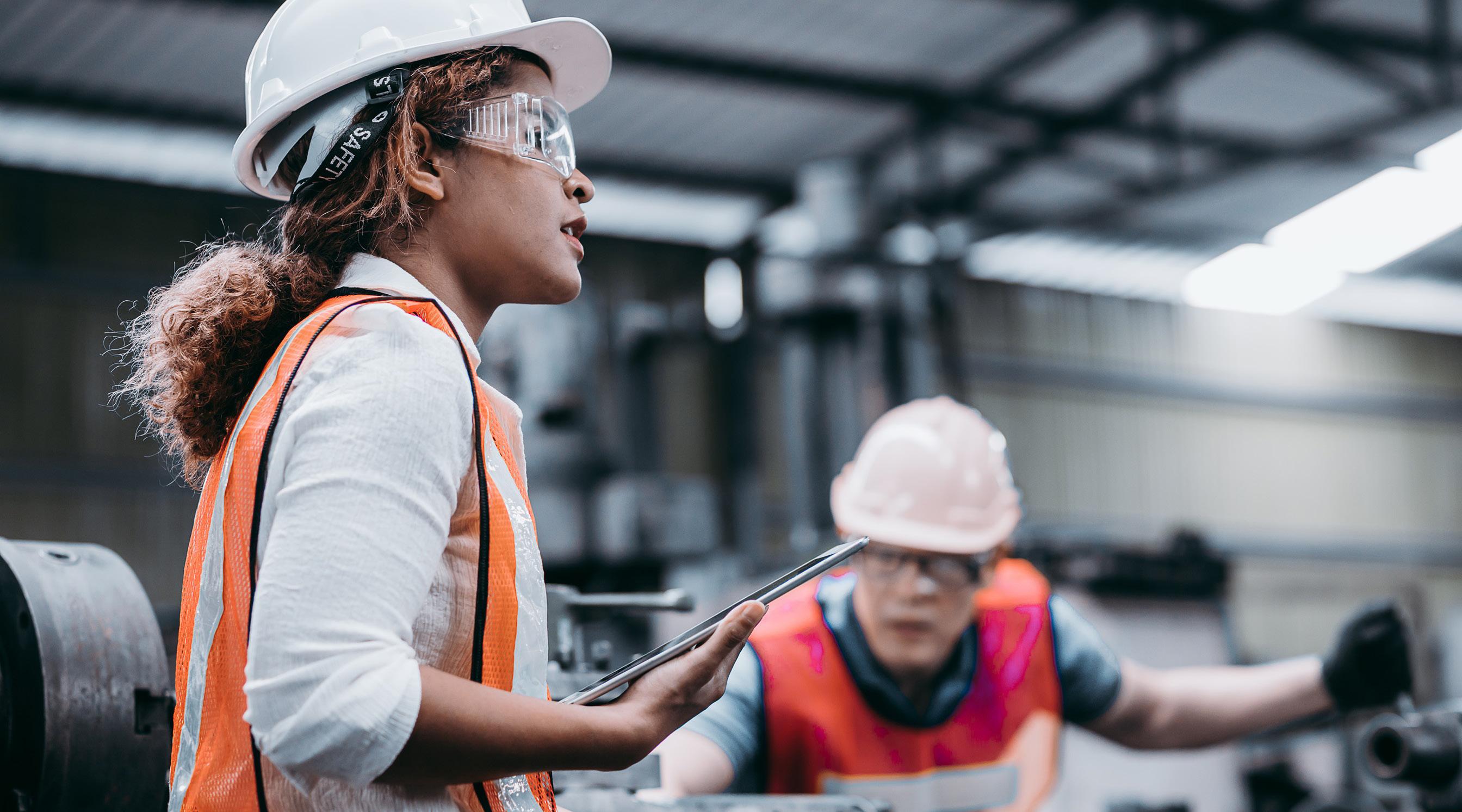
insight


Stainless Steel and South Africa’s water crossroads

South Africa’s water infrastructure is under mounting strain due to climate variability, ageing systems, and institutional breakdowns. The 2023 Blue Drop Progress Report revealed that nearly half of the country’s water supply systems are at high or critical risk. In response, national initiatives like the Water Services Amendment Bill and the National Water and Sanitation Master Plan call for urgent investment in reliable, long-lasting solutions. This is where stainless steel plays a vital role. Known for its corrosion resistance, durability, and low maintenance needs, stainless steel offers a practical, proven way to improve water infrastructure performance. Its use in both above- and below-ground systems can significantly reduce leaks, improve hygiene, and lower long-term operating costs. Drawing on international examples such as Tokyo and Seoul, and successful South African cases like the Drakenstein Municipality, this article explores how stainless steel can support sustainable water management and serve as a key driver of national water security…
Understanding the Global Water Crisis
The global water crisis refers to the growing scarcity of clean, accessible water resources. Around 703 million people worldwide, about one in ten, lack access to water, and more than two billion lack safe drinking water. Even in countries with adequate natural resources, scarcity is often caused by poor infrastructure, contamination, mismanagement, or conflict.
This crisis affects basic hygiene, public health, and economic activity. In South Africa, regions swing between extreme drought and destructive flooding. Climate change is expected to intensify these conditions, while ageing infrastructure and underperformance by municipalities make matters worse. Scarce water also drives up costs, increasing the financial burden on communities.
Economic and Technical Benefits of Stainless Steel
Stainless steel brings significant long-term economic and operational benefits to the water sector. It has a strong track record in water treatment applications, thanks to its excellent corrosion resistance, durability, and hygienic

technical insight
qualities. Austenitic stainless steels (300 series) are especially well-suited to the harsh conditions found in water systems, but duplex and other specialised grades are also widely applicable.
Why Stainless?
Stainless steel forms a self-healing passive film that protects it from corrosion in most environments without the need for coatings. This simplifies design and eliminates concerns about coating degradation, leaching, and ongoing maintenance. As a result, there’s no need to over-specify wall thicknesses to allow for corrosion loss.
Its corrosion resistance ensures stainless steel piping and components retain their performance over decades, reducing both operating costs and unplanned outages. At the end of their lifecycle, these materials retain residual value and are typically fully recycled.
With no internal corrosion or scaling, stainless steel preserves flow efficiency. Its strength and ductility allow for lightweight, thin-walled designs that are easier to transport and install, especially when welded or joined using loose flanges. Duplex grades enable further weight reduction in large installations like buried pipelines or bridge spans.
Best Practices in Design and Fabrication
For stainless steel to perform as intended, correct grade selection must be followed by attention to fabrication details. Welded joints should be prioritised to avoid crevices where corrosion could initiate. While galvanic corrosion is rare, it may occur if stainless steel is paired with less noble metals like carbon steel or galvanised iron. Proper electrical
insulation or using compatible materials is essential in such cases.
Welding is the most common point of failure, but problems are avoidable with best practices: fullpenetration welds, elimination of heat tint, and thorough post-weld cleaning. Contamination with iron particles can cause rust staining or pitting and should be avoided with proper material handling and workshop discipline.
Case Study: Tokyo’s Long-Term Stainless Steel Strategy

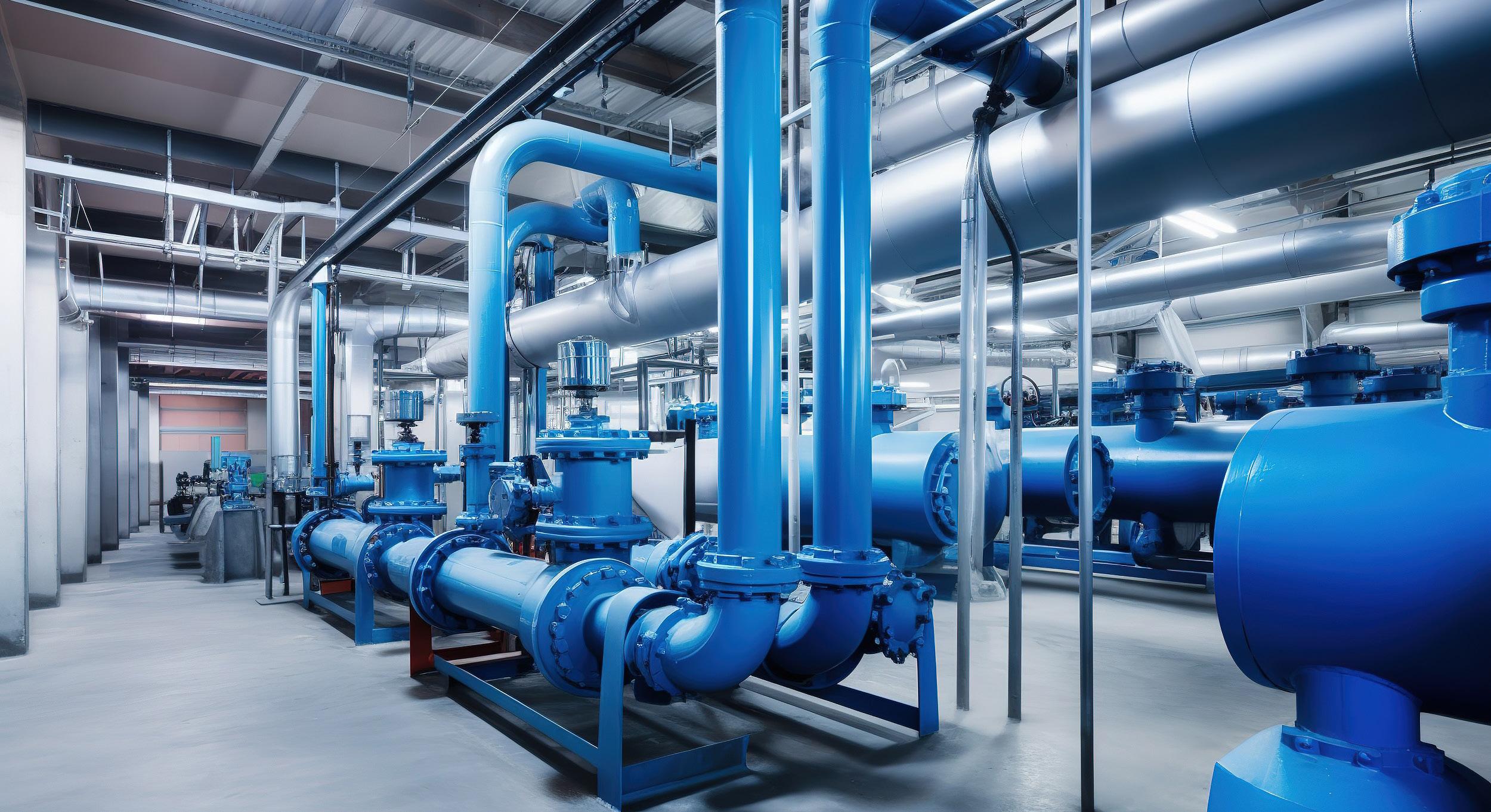
technical insight


Service Line Replacement: The “last metre” of deliveryoften still in lead-was replaced with corrugated stainless steel pipe, offering flexibility and reducing joint-related leaks. Other components such as flanges, pumps, and valves were also upgraded to stainless steel.
• Proactive Leak Detection: Scheduled inspections covered the entire system every 10 years, supported by a 24-hour mobile leak detection unit for rapid repairs.
• Technology and Skills Development: Ongoing innovation in detection methods, alongside skills development through international partnerships, created a sustainable programme.
By 2011, the city reduced its water loss rate to just over 2%. Annual leak repairs dropped from 69 000 in 1980 to 12 800 in 2011. The knock-on effects included fewer traffic disruptions, better mobility, and a 53 700 ton annual reduction in CO₂ emissions, the equivalent of removing 22 900 cars from the road. In addition, water loss fell from 133 000 in 1980 to 6 400 cubic metres per day by 2011 equating to a financial saving of $480-Million a year.
South Africa: Local Proof of Concept
South Africa’s average water loss rate exceeds 35%, but some municipalities have demonstrated that world-class performance is possible. For example, the Drakenstein Municipality in the Western Cape reduced losses from over 30% two decades ago to below 10% today. Its strategy mirrors Tokyo’s:
• Corrugated stainless steel piping (Grade 304 above ground, 316 underground)
• Fast response to leaks
Planned preventative maintenance
The results speak for themselves: significantly lower water loss, reduced maintenance costs, and a more resilient infrastructure. It proves that stainless steel is not just suitable for high-income urban centres, but adaptable to local conditions in South Africa.
A Strategic Material for South Africa’s Future
It’s clear that stainless steel offers unmatched long-term value for water infrastructure particularly in a country where system failure often comes down to materials and maintenance. South Africa does not need to invent a new solution given that global case studies and local proof points already exist.
The path forward involves prioritising quality over short-term savings, investing in competent municipal management, and committing to long-term infrastructure improvement. Stainless steel may carry a higher upfront cost, but the lifecycle savings, namely fewer leaks, reduced energy use, better hygiene and recyclability, far outweigh the initial outlay.
Conclusion
South Africa stands at a water crossroads. With increasing pressure on supply, failing infrastructure, and environmental stress, the country needs robust, futureproof solutions. Stainless steel delivers the performance, reliability, and economic logic required to meet this challenge.
If used strategically, stainless steel can be the backbone of South Africa’s move toward water resilience, ensuring not just supply, but sustainability, for generations to come.

professional profile
The Stainess Steel Strategist: Pierre Rootman’s Game Plan for Growth
With three decades of experience under his belt, Pierre Rootman has become a driving force in South Africa’s stainless steel industry. From his early days in the lab to leading market expansion across North America, his career reflects both deep technical expertise and sharp commercial acumen. Now, as Area Manager for Africa Stainless at Columbus Stainless, Rootman is turning his focus homeward, bringing global insight to local challenges. In this profile interview, he shares the lessons that shaped him, the innovations reshaping the industry, and his bold vision for empowering a new generation of talent across the African continent.
Please provide some background on where you come from, your school and tertiary education and where you first started working?
I grew up in the small town of Potchefstroom in the North West province and matriculated from Potchefstroom Gymnasium in 1991. I studied Metallurgical Engineering and obtained my National Higher Diploma in Metallurgy from the Vaal University of Technology in 1995. In March 1996, I started working for Columbus Stainless as Junior Lab Metallurgist.
What are some of the key work experiences or projects, that you have worked on that have challenged you but also helped to shape your skills, experience and career advancement?
During my first years in the Columbus Laboratory, I had the opportunity to learn about the metallurgy of the different stainless steel types and learned to operate highly specialised laboratory equipment such as the Electron Microscope. Through numerous failure investigations conducted for the various operational areas, I grew my understanding and detailed knowledge of the entire steelmaking process from melting to final line processing.

After six years in the Laboratory, I was appointed as Metallurgist in the Technical Customer Services Department. Over the next nine years, I travelled extensively through South Africa to assist our customer base with complaints or technical assistance. I gained experience in the automotive, fabrication, and stockist sectors. These interactions laid the foundations for the skillset I would need when I moved to the Commercial Department in 2010. I started as Sales Manager for the North American market and held this position for 14 years. During this
period, I helped grow the market from a couple of hundred tons per month to an average of 4 500 to 5 000 tons per month by 2024.
What is your current position and how would you describe a typical day on the job?
In January 2025, my role changed to Area Manager for Africa Stainless. A typical day starts with checking daily and weekly reports on sales performance, identifying trends, and tracking key performance indicators. A significant portion of my day is spent coaching and guiding our team of Key Account Managers on sales strategies and targets. I also maintain contact with key customers to build and strengthen relationships. I believe in always striving to meet the needs of our customers. As Area Manager, I work closely with other departments to ensure a smooth sales pipeline from order intake to final delivery. It’s also crucial for me to stay informed about new stainless steel products, industry trends, and competitor activity.
“The key is to really ‘listen and hear’ what people want. It’s a continual process, and as long as you’re open to learning from mistakes, it becomes a rewarding path of personal growth.”
What would you say are the biggest i. work and ii. life lessons you have learnt thus far in your life?
Work: One of the biggest work lessons I’ve learned in my 29 years at Columbus is the importance of teamwork, especially in navigating tough market conditions. This applies not just within departments but across the organisation. Often, it’s through cross-functional collaboration that innovative ideas are born. These have repeatedly helped us weather challenging times.
Life: On a personal level, the biggest life lesson has been learning how to merge my technical skills with the needs and expectations of both internal and external customers. The key is to really ‘listen and hear’ what people want. It’s a continual process, and as long as you’re open to learning.
How do you hope to take your career to even greater heights - what are your plans for the future?
With three decades in the stainless steel industry, including 14 years in commercial leadership in the North American market, my focus now is on growing and revitalising the
professional profile

South African, and broader African, manufacturing sectors. Understanding the local market will take time, but I bring extensive technical and market knowledge that I’m eager to share. My goals are twofold: Firstly, to support all stakeholders in the stainless steel value chain, including producers, fabricators, and end users, through strategic guidance, technical support, and market development. Secondly, to invest in the next generation by mentoring young talent within Columbus Stainless and our customer network, ensuring continuity and sustainable growth.
“Stainless steel is playing a key role in the hydrogen economy, especially in storage systems.”
In your opinion what are the biggest challenges currently facing the South African stainless steel industry and what are some of the innovative ways these can be overcome?
Market overcapacity in China has driven down prices across international and Asian markets, creating a notable price gap compared to European and American markets. This has directly impacted South Africa by flooding the market with low-cost imported goods and raw materials, intensifying competition. The result is underutilised domestic manufacturing capacity and shrinking profitability.
Given the global trend of import tariffs in major economies, there’s a strong case for the South African government to implement similar protective measures. However, while tariffs may offer short-term relief; long-term survival depends on operational efficiency and innovation, particularly in finding new and diverse applications for stainless steel.
What do you consider the most exciting innovations/product developments happening in stainless steel right now and what sectors hold the greatest potential for the use of stainless steel in the future?
The stainless steel industry is undergoing a wave of innovation driven by sustainability and advanced applications. Exciting developments include highperformance and nickel-free alloys designed for extreme environments and medical use. We’re also seeing a shift to green production, with cleaner energy sources and increased recycling to cut emissions. Stainless steel is playing a key role in the hydrogen economy, especially in storage systems. These advancements are positioning stainless steel as an essential material for a sustainable and tech-driven future.

Lessons from the depths of the Dead Sea technical insight Can mild steel survive where stainless fails?

Can mild steel ever outlast stainless steel? It’s a question that challenges conventional engineering wisdom but under the right conditions, such as the ultra-saline, oxygen-starved waters of the Dead Sea, the answer might not be as clear-cut as it seems. This article examines two intriguing technical questions raised during the Sassda Fundamentals of Stainless Steel Course: first, whether Grade 316 stainless steel is appropriate for heating hard water; and second, whether mild steel might, in rare cases, offer greater durability than stainless steel?
The Importance of Grade Selection in Stainless Steel Applications
Stainless steel is not a single material but a family of more than 200 different grades, each developed for specific operating conditions and environments. Selecting the correct grade is fundamental to achieving reliable performance, optimal corrosion resistance, and long-term cost efficiency. This point was heavily emphasised during a recent session of the Sassda Fundamentals of Stainless Steel Course.
Two questions posed during the session highlighted just how critical grade selection can be. The first centred on selecting a suitable material for a vessel designed to heat and hold borehole water - typically high in mineral contentat temperatures above 50°C. The second posed a theoretical, but compelling challenge: is there any situation in which mild steel might outlast stainless steel?
Grade 316 and Its Application in Hard Water Heating
The first scenario described the need for a hot water cylinder operating at atmospheric pressure and intended to heat and store borehole water, which is known for its high hardness and elevated chloride levels. The initial material selection was Grade 316 austenitic stainless steel, a common and reliable choice for chloride-rich environments, thanks to its molybdenum content which enhances resistance to pitting corrosion. From a corrosion protection standpoint, this selection is understandable. The molybdenum in Grade 316 provides improved defence against pitting, particularly when compared to Grade 304. However, corrosion protection involves more than just resistance to pitting. In this particular application, the presence of chlorides, elevated temperatures, and residual or applied stresses introduces another significant risk: Stress Corrosion Cracking (SCC).
technical insight

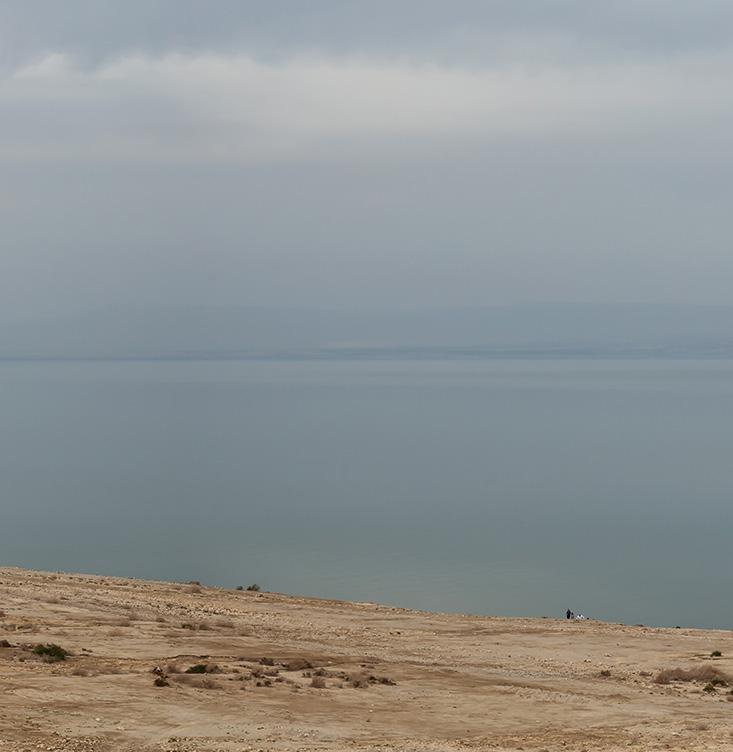
The Hidden Threat of Stress Corrosion Cracking
SCC is an insidious form of corrosion that can cause sudden, catastrophic failure without significant warning. It occurs when three key factors are present simultaneously:
• A susceptible material - Austenitic stainless steels, especially those containing between 5% and 20% nickel (such as Grade 316), are inherently prone to SCC.• Unnecessary costs, associated with removing, recutting, or treating affected products by taking proactive measures immediately after cutting.
• Tensile stress - This can be introduced through residual stresses in flat-rolled products, or through fabrication
processes such as welding, cutting, and forming. In this case, additional stresses would be induced by the operational load of the heated water.
• A corrosive environment - Chloride ions are a common culprit, and their effect can be exacerbated in acidic water or at elevated temperatures.
Temperatures above 50°C significantly increase the risk of SCC in Grade 316. Given that the water in this application is expected to be chloride-rich, and the vessel is exposed to continuous tensile stress and heat, all three conditions for SCC are likely to be met.
While the pitting resistance of Grade 316 is suitable, its vulnerability to SCC makes it less than ideal for this specific use. Failure due to SCC can be unpredictable, irreversible, and costly, with consequences ranging from operational downtime to serious safety risks.
A Viable Alternative: Ferritic Grade 444
An alternative that warrants consideration is Grade 444, a ferritic stainless steel that shares several corrosionresistant features with Grade 316 but offers key advantages in this application.
Grade 444 contains approximately 18% chromium and 1.8 to 2.5% molybdenum, matching Grade 316 in general corrosion protection and pitting resistance. In fact, thanks to its chemical composition, Grade 444 offers a higher Pitting Resistance Equivalent Number (PReN) than Grade 316, providing superior performance in chloride-bearing environments.
Crucially, being a ferritic steel, Grade 444 is immune to SCC, eliminating one of the major risks posed by the use of Austenitics in high-chloride, high-temperature environments. In addition, it does not contain nickel, which not only reduces the likelihood of SCC but also lowers material costs, making it a more economical and stable option in price-sensitive applications.
From a fabrication standpoint, 2.5 mm material thickness is suitable for use with Ferritics and falls within the weldable gauge range, simplifying construction and assembly.


technical insight
Optimising Performance: Surface Finish and Post-Weld Treatment
In corrosive applications, surface finish plays a critical role in material performance. For Grade 444, a 2B mill finish is recommended as it offers the smoothest surface, which helps to reduce crevice sites and biofilm formation, thereby enhancing corrosion resistance.
Equally important is post-weld treatment, particularly in areas affected by fabrication heat. Proper passivation and surface restoration are essential to restore corrosion resistance and maintain material integrity in service.
Mild Steel vs. Stainless Steel: A Rare Exception?
The second question raised during the session took a different direction, challenging a long-standing assumption: Is there a situation where mild steel could actually outlast stainless steel?
On the surface this seems implausible, but under specific environmental conditions, it may be possible, particularly in oxygen-depleted environments where the mechanisms of corrosion for both materials are disrupted.
Understanding the Corrosion Mechanisms
Mild steel corrodes by oxidation in the presence of oxygen, forming rust (iron oxide). Conversely, stainless steel relies on the presence of oxygen to maintain its passive chromium oxide layer, which protects the underlying metal from corrosion.
If the oxygen content in the environment is extremely low, both processes slow dramatically. In fact, without oxygen, mild steel has no catalyst for rusting, and the passive layer on stainless steel can degrade without being replenished.
A fascinating example of this can be found in the Dead Sea, one of the most saline and dense bodies of water on Earth. With salinity levels as high as 34.2% and significantly reduced oxygen concentrations, conditions are such that
carbon steel exhibits minimal corrosion when fully submerged. A 1990 study on corrosion and scaling in the Dead Sea basin revealed that steel pipework in submerged applications experienced unexpectedly low corrosion rates.
This is further supported by anecdotal evidence: mild steel ladders, rails, and fixtures submerged in the Dead Sea often show surprisingly little rust, defying expectations for such a saline environment.
Does Mild Steel Actually Last Longer?
While these findings are intriguing, they do not conclusively prove that mild steel will outlast stainless steel. The real takeaway is that both materials experience minimal corrosion due to the lack of dissolved oxygen. However, stainless steel’s passive layer is still vulnerable in low-oxygen settings, and once breached, corrosion will proceed similarly to mild steel.
Thus, it is more accurate to say that in unique submerged environments like the Dead Sea, mild steel may last just as long as stainless steel - not longer. Such scenarios are extremely rare and not representative of most industrial or domestic applications.
Context specific selection
These two technical discussions underscore the importance of context-specific material selection. Grade 316 is widely used and trusted, but it is not a one-size-fits-all solution, particularly in environments conducive to SCC. Ferritic Grade 444, while less well-known, offers excellent corrosion resistance and immunity to SCC, making it a strong candidate for hard water heating systems.
As for mild steel outperforming stainless steel, such cases are rare and dependent on extreme environmental conditions like those found in the Dead Sea. Nonetheless, they remind us that materials engineering is never absolute - it must always be grounded in the realities of the application.

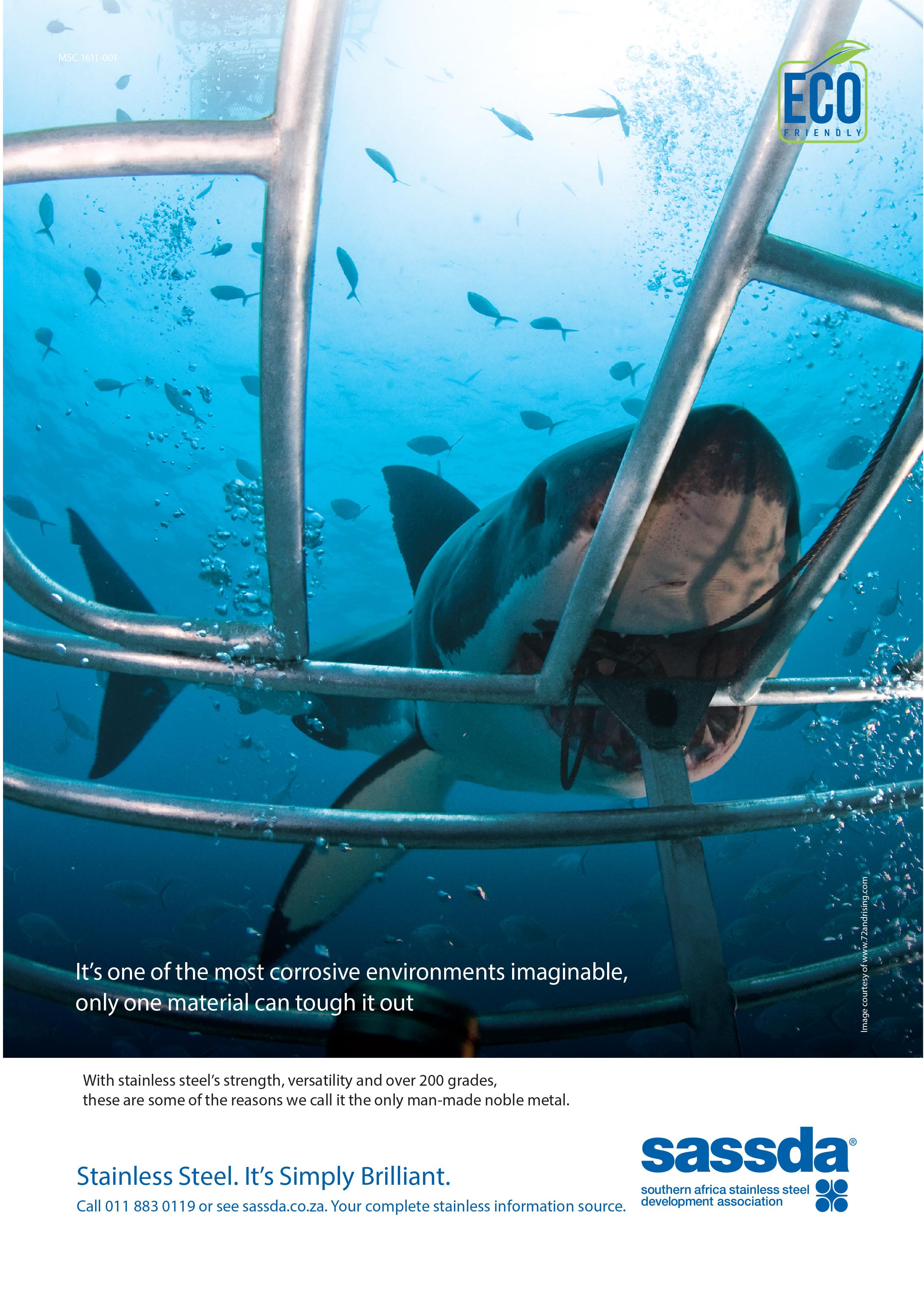


Scrap Power progress: Cronimet’s Sustainable Stainless Steel Journey
This year marks thirty years since Cronimet, the international stainless steel recycling specialist and long-time member of Sassda, established its operations in South Africa. For Cronimet South Africa Managing Director Bernard Maguire, it is both a milestone and a moment of reflection on how far the business and the industry have come. With clarity and candour, Maguire discusses Cronimet’s beginnings, the shifting challenges of local manufacturing, and the growing urgency of sustainability in a resource-conscious world.
Cronimet began in Germany in 1980, expanding across Europe before selecting South Africa as its first investment outside of Europe. The local arm officially launched in 1995, just as the country transitioned into democracy. “The emotional atmosphere was positive, and we were on a national honeymoon. But make no mistake, the decision was ultimately about business, it made financial sense,” says Maguire. His own career in stainless steel began ten years earlier. “That’s 40 years in this business. You don’t realise how much time has passed until you start putting the numbers together,” he reflects.
The local stainless steel industry Maguire entered in the 1980s was thriving, supported by a vibrant automotive sector, tank container manufacturing, architectural applications, and a strong domestic market for products such as Cutlery, holloware and tubing. It was a diverse
and promising ecosystem, but the past decade has seen that picture change dramatically. “We’ve seen massive geopolitical and trade shifts. A decade ago, you wouldn’t hear ‘geopolitics’ in a business conversation. Now it’s front and centre,” says Maguire.
The rise of China as a global industrial power and the emergence of nickel pig iron from Indonesia disrupted traditional stainless steel markets. The economics of scrap shifted, and materials that once had stable value faced new competition. Meanwhile, global environmental awareness surged, transforming scrap metal from a low-cost substitute into a key player in sustainable manufacturing.
While global momentum around circular economies and climate goals accelerated, South Africa’s manufacturing landscape faltered. “In 1995, stainless steel manufacturing in South Africa was vibrant. We had automotive, tank

containers, architecture, and strong domestic markets like cutlery and tubing. Today, much of that is gone. We’ve stalled. And in some cases, we’ve scored own goals,” says Maguire. He attributes the sector’s decline in part to government interference and restrictive trade regulations. “We know what needs fixing, but the industry isn’t being heard,” he adds.
Sustainable growth
In contrast, Cronimet has adapted by putting sustainability at the heart of its business. Where input cost once dominated decision-making, today environmental impact and efficiency are central to how the company operates.
This mindset has led to serious investment. Cronimet South Africa recently installed 594 photovoltaic panels that allow its operations to run on solar power during daylight hours. Diesel-powered forklifts and heavy loaders have been replaced with electric versions. “These weren’t decisions we were forced into due to load shedding. They were strategic moves to reduce our environmental impact and long-term operating costs,” says Maguire.

uncertainty led to a more modest approach. Instead, the focus is on recognising the people who built the business, including several employees who have been with the company since its inception. That loyalty and continuity, Maguire believes, are part of what makes Cronimet resilient and forward-looking.
Technology has also changed the way scrap is processed. While some tools such as handheld analysers remain essential for identifying materials, new techniques allow Cronimet to blend and refine stainless steel scrap that contains high levels of copper, which previously had little to no market value. “What used to sell for cents now has real value because of better recoverability. We’ve shifted our mindset from disposal to beneficiation,” says Maguire.
Yet even as sustainability becomes more integrated into business models globally, Maguire believes the concept of the circular economy remains poorly understood in South Africa. “In Europe, circularity is the default. Here, most people in the sector still don’t really know what it means. Ask ten people for a definition and you’ll get ten answers or blank stares,” he says.
He believes industry bodies and the recycling sector at large must take the lead in changing this. “We should be driving that conversation and educating both industry and government,” he says. For Cronimet, promoting circularity is not just a trend, but part of a broader commitment to building a future-proof business model. “It’s not just a PR line. It’s in our training, in our daily operations, in how we plan ahead,” Maguire says.
Facing local challenges with global vision
Although Cronimet initially considered large-scale celebrations for its thirtieth anniversary, global and local
Looking to the future, he sees opportunity not just in growing the company’s recycling operations but also in expanding its role in value-added production. “We’re asking our younger team: where do you see us in five or ten years? Maybe we’re not just about recycling anymore. Maybe we’re adding new value in different ways,” he says.
Globally, Cronimet is already experimenting with new processes, including converting scrap into specialised alloys and recovering materials from legacy mining dumps. These efforts reflect a larger ambition. “We’re not just shifting metal. We’re finding value in places others overlook. And we’re always asking how we can do it cleaner, smarter, and more sustainably?” says Maguire. Thirty years in, it’s clear that Cronimet is not standing still. It is evolving with purpose.
What is the Circular Economy?
The circular economy is an economic model that prioritises reuse, recycling, and sustainability. Unlike the traditional linear system of take, make, and dispose, circularity aims to keep materials in use for as long as possible. In the stainless steel industry, this means using scrap instead of virgin materials, cutting emissions, and reducing energy consumption. Circular models help businesses become more resource-efficient while also reducing environmental impact.


Angola Steps Up: Energy Investments Drive Momentum & Demand for Stainless Steel
Angola is undergoing a major transformation, positioning itself as a rising force in Southern Africa through bold investments in its energy sector. Strategically located on the Atlantic coast and bordering Namibia, Congo, and Zambia, Angola holds a vital geopolitical position that enhances its regional influence. Despite facing deep rooted socio-economic challenges, including widespread poverty, stark income inequality and high inflation, the country is pressing ahead with efforts to strengthen energy independence and diversify its economy…
Angola’s Economic Backbone: Oil and Gas
Angola’s economy is heavily reliant on oil production, which accounts for the largest share of its GDP and export revenues. Its main exports, crude oil, refined petroleum, natural gas, and diamonds, reflect a commoditydependent structure. The country exports the bulk of its crude oil while importing most of its refined petroleum products. This import-reliant model has historically made Angola vulnerable to external shocks and global oil price fluctuations.
However, recent energy infrastructure projects suggest a deliberate push to change that model. By building domestic refining and gas processing capacity, Angola aims to keep more value within its borders while reducing dependence on imports. This shift brings with it a surge in demand for stainless steel which is critical to the infrastructure of these industries due to its corrosion resistance, durability, and ability to perform under extreme conditions.
Cabinda Oil Refinery: A Strategic Leap Toward Energy Independence
The Cabinda Oil Refinery Project is one of the most critical undertakings in Angola’s energy transformation. Having begun operations in April 2025, the refinery is a joint venture between Gemcorp Holdings Limited and Angola’s national oil company, Sonangol.
The refinery’s first phase includes a crude distillation unit capable of processing 30 000 barrels of Cabinda crude oil per day. This would meet 5% to 10% of Angola’s domestic fuel demand and marks a significant milestone, given that Angola currently imports most of its refined fuels.
Despite pandemic-induced delays and budget overruns driven by inflation, the project has moved ahead of schedule. Commissioning is planned for early 2025, with refined products expected to reach the local markets shortly thereafter. Once operational, the refinery will strengthen
Angola’s energy security, reduce foreign currency outflows, and create local jobs.
Crucially for Sassda members, the construction and long-term operation of this refinery involves a wide range of stainless steel applications, ranging from storage tanks and heat exchangers to pressure vessels, piping, and fittings. The harsh process conditions and exposure to chemicals also make stainless steel indispensable in this type of refining environment.
Non-Associated Gas: Quiluma and Maboqueiro Fields Signal New Chapter
In line with its refining ambitions, Angola is embarking on a pioneering gas project. The Quiluma and Maboqueiro fields, managed by the New Gas Consortium (NGC), are expected to commence production by late 2025 or early 2026. With a projected total investment of USD 2.4-Billion, the project is Angola’s first non-associated gas development and a crucial step for the economy to diversify beyond oil.
Azule Energy, a joint venture between Eni and BP, is spearheading the initiative in collaboration with Sonangol E&P, Chevron, and TotalEnergies. Operating in the country’s shallow offshore waters, the project will produce over 330 million cubic feet of gas per day at peak output.
This high-spec, safety-critical operation demands materials with superior resistance to corrosion, stress cracking, and high-pressure conditions all of which are traits that stainless steel delivers in abundance. Stainless components will be essential in gas processing units, subsea systems, LNG transfer lines, and cryogenic storage, offering Sassda members multiple entry points.
Over 2.5 million hours have already been logged on the project with zero lost-time injuries which is a testament to both engineering precision and workforce safety. Once online, this gas project will support Angola’s energy transition, boost local power generation, and lay the groundwork for potential exports.
Begonia Oil Field: Boosting Subsea Output
TotalEnergies is leading another key offshore initiative with the Begonia oil field development in Block 17/06. Having added 30 000 barrels per day to Angola’s production by late 2024, the project is structured as a subsea tieback to the existing Pazflor FPSO (floating production, storage, and offloading vessel).
The subsea installation will involve five wells - three for production and two for water injection - connected via a 20km-long multiphase pipeline. This configuration is not only efficient but cost-effective, leveraging existing infrastructure to maximise return on investment.
Subsea oil production, especially in corrosive saltwater environments, depends heavily on stainless steel grades such as duplex and super duplex for flowlines, control systems, and connectors. For Sassda members involved in marine and offshore applications, the Begonia field offers a compelling case for specialised fabrication and supply.
market intelligence

Outlook: Turning Projects into Progress
Overall, these developments suggest Angola is not standing still but rather strategically investing in infrastructure to extract greater value from its natural resources. The Cabinda Refinery is a bold move toward domestic energy security, while the gas consortium opens a new chapter for Angola’s energy mix and the Begonia subsea project strengthens offshore production without massive new overheads.
Together, they reflect a coordinated effort to modernise Angola’s energy sector and make it more resilient. These investments also carry downstream benefits: a more stable fuel supply, job creation, local skills development, and potentially even export opportunities for refined products or LNG in the future.
For stainless steel producers, fabricators, and suppliers in the Southern African region, these projects represent a growing market with long-term potential. From high-spec alloy materials to structural and modular components, stainless steel is a backbone of this industrial expansion.
Key Outtakes…
Angola is at a pivotal moment. It has the natural resources, the ambition, and now, the infrastructure projects that could fundamentally shift its economic trajectory. These strategic developments are about more than just energy; they are laying the foundation for a modern industrial economy.
For Sassda members, this means opportunity. The projects in Angola are already shaping up to be stainlessintensive, with applications spanning oil, gas, chemical processing, and offshore engineering. With the right strategy and partnerships, the stainless steel sector in Southern Africa can become a key enabler of Angola’s transformation and grow with it.
Source: Africa House www.africainfo.co.za


Smarter Welding, Stronger growth: Coalition Engineering teams with SASSDA member news
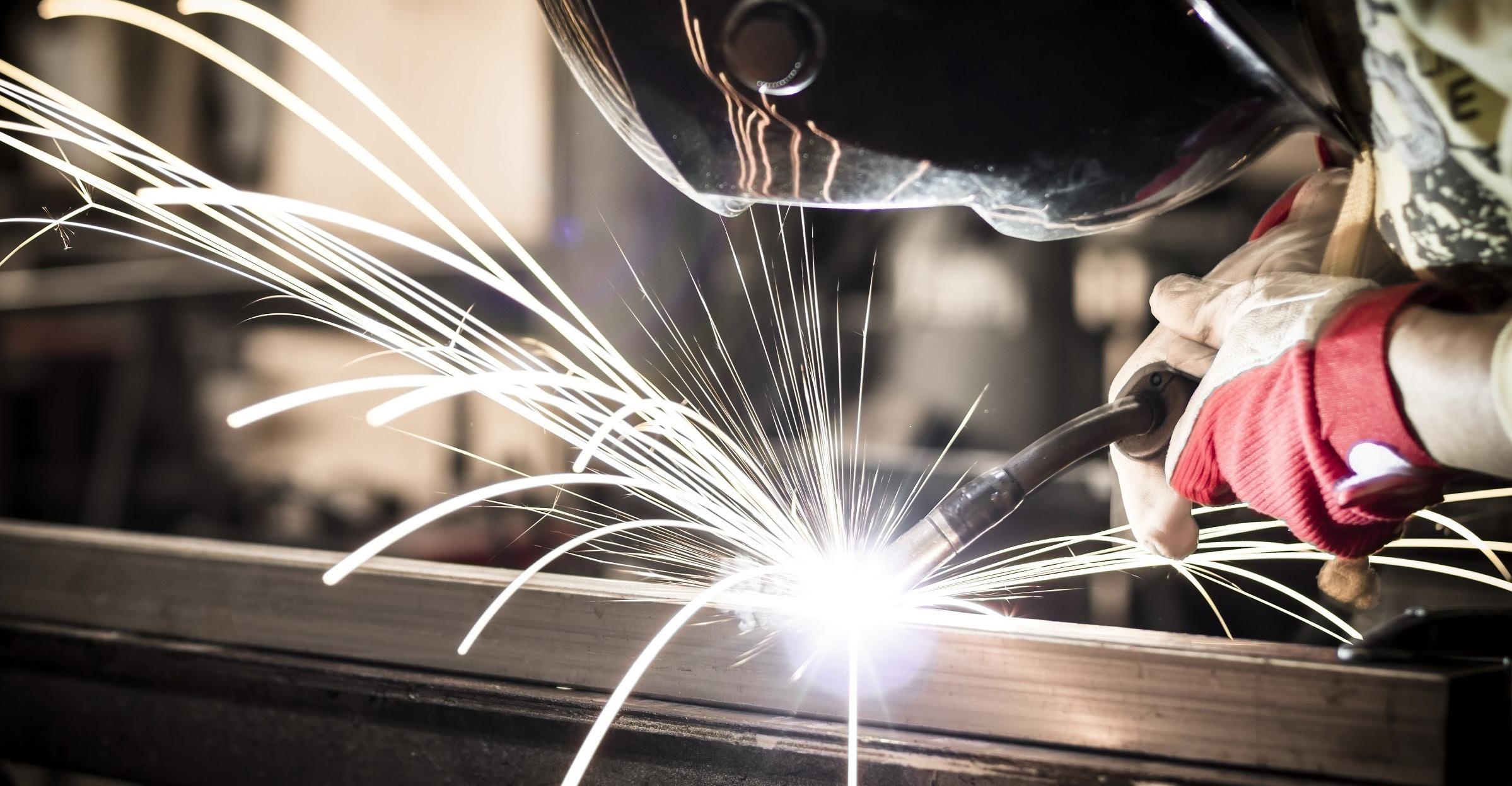
As stainless steel fabrication faces rapid transformation, from stricter sustainability demands to next-generation automation, Coalition Engineering Supplies has positioned itself not merely as a supplier, but as a strategic enabler for forward-looking fabricators. Its recent decision to join Sassda is both a signal of intent and a commitment to playing a more active role in the sector’s evolution.
Director Wes Bischoff says, “Joining Sassda was a strategic decision driven by a clear vision. We want to strengthen our position within the stainless steel value chain through deeper industry collaboration, access to insights, and continuous innovation.”
Technology differentiators
As a specialist supplier serving industries from rail to HVAC, Coalition Engineering is acutely aware of the shifting
pressures within these sectors. Infrastructure upgrades in rail and the push for more energy-efficient HVAC systems have created surging demand for corrosion-resistant, high-integrity welded components. It’s in these high-spec environments that the company’s expertise in precision welding solutions, including laser welding and gas-saving technology, becomes a true differentiator.
Coalition isn’t just meeting demand, it’s driving change. Beyond products, it focuses on process efficiency and sustainability. Tools like the Optimator® help cut gas use by up to 50% without sacrificing quality and partnerships with innovators like Translas, CLOOS, and GasiQ, Coalition support cleaner, more efficient welding.
Catalysts for change
For Coalition, these tools are more than just components, they’re catalysts for change. “We’re working closely with clients to help them shift from traditional fabrication methods to laser welding and cleaning. These technologies reduce rework, improve quality, and future-proof operations. The challenge isn’t the technology itself-it’s building confidence in the investment.”
Part of building that confidence lies in knowledgesharing, which is a key reason Coalition has aligned with

Sassda. “The partnership is about more than industry affiliation. It’s a two-way commitment to growing skills, sharing best practices, and unlocking opportunity across the stainless steel sector,” says Bischoff.
Growth partners
Coalition plans to take full advantage of Sassda’s technical resources, training platforms, and networking initiatives. This includes investing in upskilling its workforce to global standards and contributing thought leadership on emerging technologies and sustainable practices. “Ultimately, Sassda is more than a membership, it’s a growth partner,” says Bischoff.
Looking ahead, Bischoff sees three major trends reshaping stainless steel fabrication over the next five years:
1. Sustainability - Demand is rising for energy-efficient processes, greener equipment, and reduced material waste. Technologies like the Optimator® and low-energy welding systems are central to this shift.
2. Automation - Robotics will play a growing role, especially in high-volume or precision-focused sectors. Coalition is preparing clients with access to advanced robotic welding platforms and support to integrate them.
3. Material Specialisation - More sectors are adopting duplex and super duplex stainless steels. Coalition is responding by ensuring its offerings match the requirements of increasingly demanding applications.
“Our goal is to not just support the current needs of South African fabricators-but to prepare them for what’s next,” Bischoff affirms.

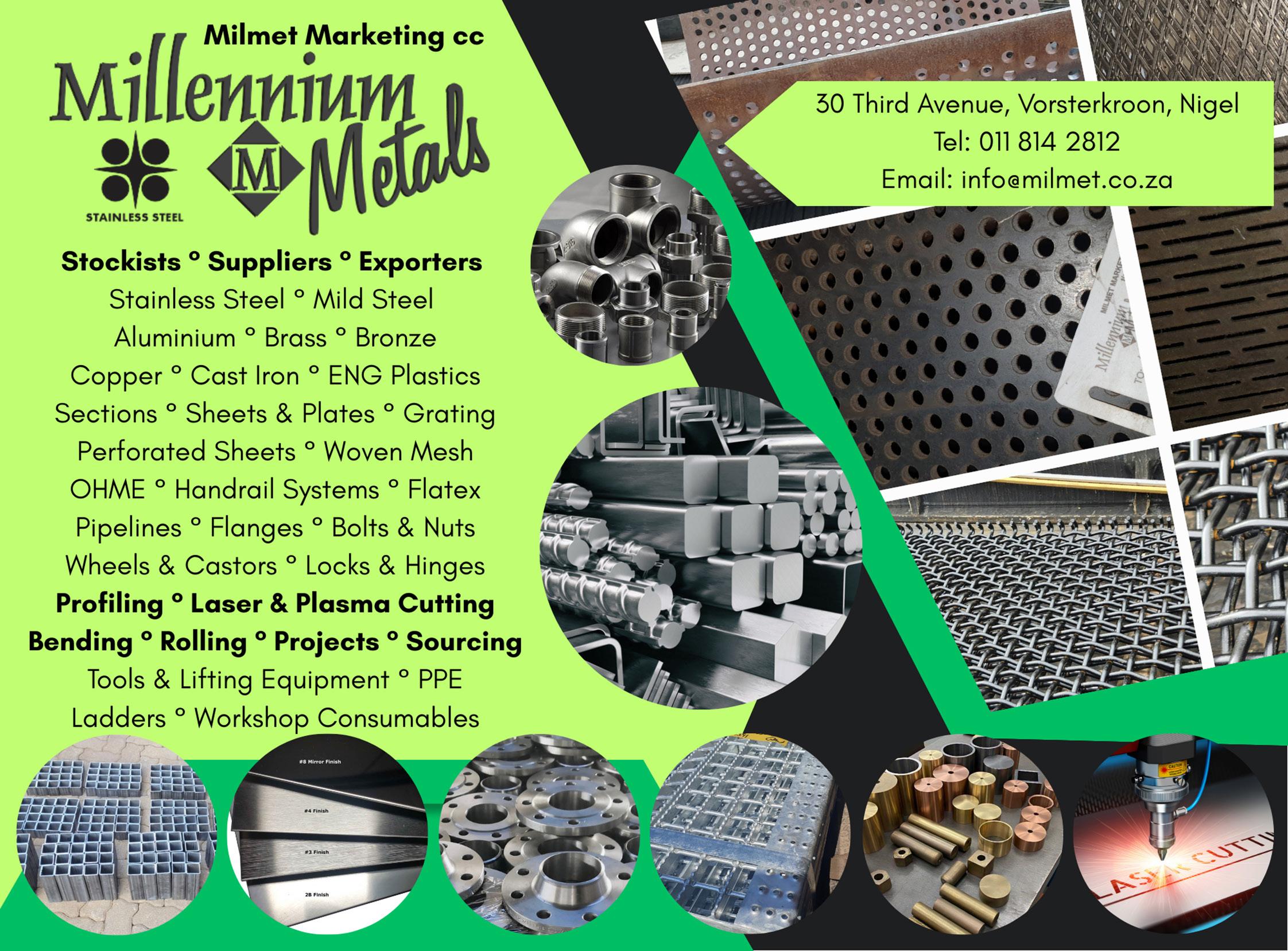

A Smarter Safer Approach to Stainless Steel Weld Cleaning
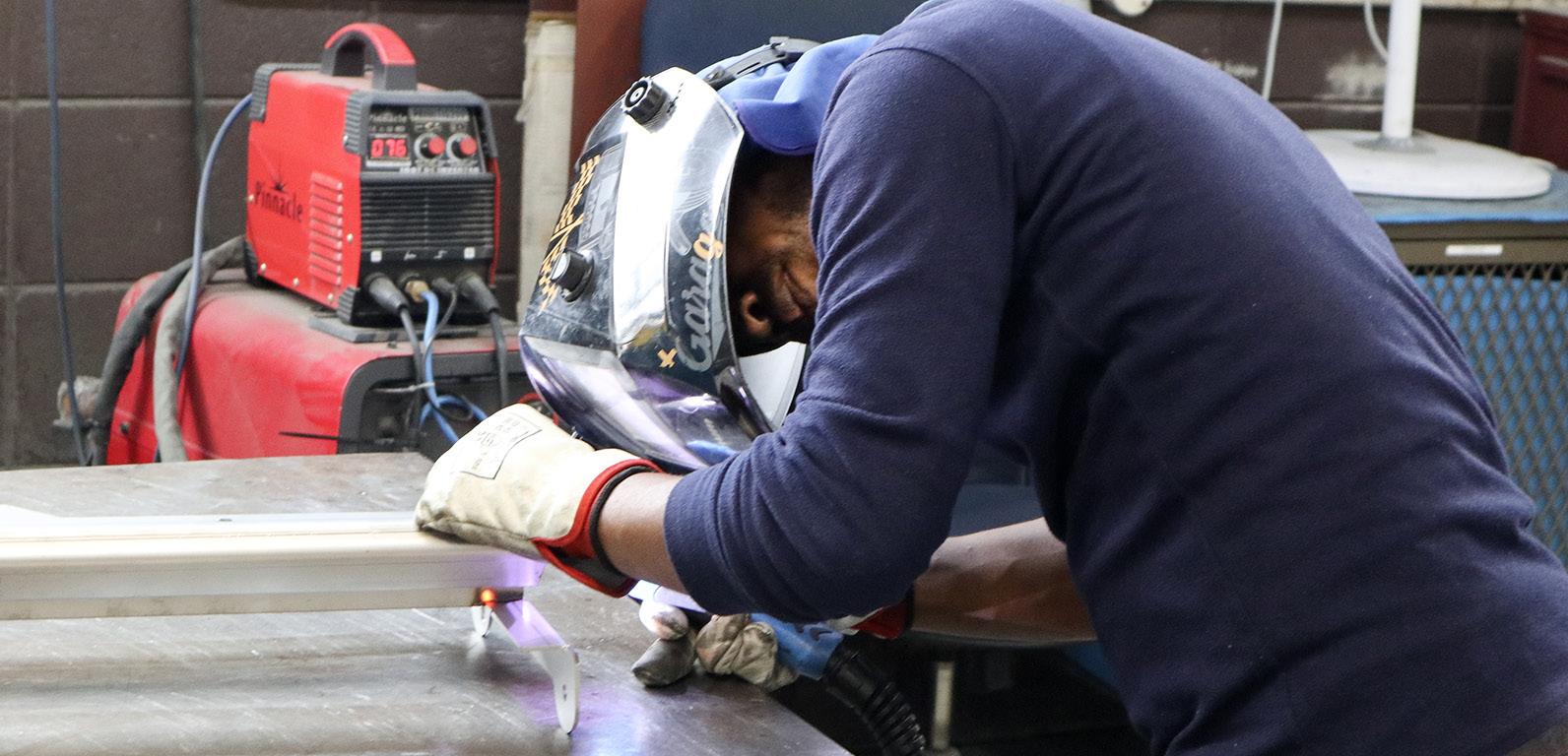
In stainless steel fabrication, achieving clean, corrosionresistant welds is essential, especially in industries like food processing and pharmaceuticals. Traditionally, this meant using harsh pickling pastes or time-intensive mechanical methods. The Pro Inox Electrolytic Weld Cleaner (EWC) offers an alternative that’s both safer and more efficient. Instead of relying on corrosive chemicals, the EWC uses electrochemical cleaning. A low-voltage current runs through a carbon brush dipped in a special fluid, removing weld discoloration and oxidation in seconds. The process is fast, precise, and leaves the metal with a bright, natural finish. What makes this system stand out is its dual-user design and adjustable power settings. This allows two operators to work simultaneously, improving throughput in busy workshops or production lines. Its consistent performance also means less rework and more predictable results-key benefits
IMPORTER AND DISTRIBUTOR OF HIGH QUALITY STAINLESS STEEL FASTENERS
With an extensive inventory of nearly 10,000 items readily available for immediate delivery, Fastenright is redefining the benchmark for Stainless Steel Fastening Solutions.
Recognized and relied upon by industry leaders, Fastenright emerges as the ultimate preference for projects requiring unmatched professionalism and expertise.
Backed by an unwavering dedication to quality and a relentless pursuit of excellence in service!
Put us to the test - Contact Fastenright today and experience the difference firsthand!

when working with demanding clients or tight deadlines.
One of the most significant advantages of the EWC is safety. By eliminating pickling paste, the process removes exposure to toxic fumes and skin contact with hazardous substances. It also reduces the need for waste disposal associated with traditional chemical methods, making it a cleaner choice both environmentally and operationally.
For businesses focused on productivity, worker safety, and long-term durability of stainless steel components, electrochemical weld cleaning represents a meaningful upgrade. The Pro Inox EWC is part of a shift toward smarter tools that streamline fabrication while aligning with modern health and environmental standards.
The machine is offered by Sassda member Scientific Engineering, underlining its credibility and focus on industry best practices.
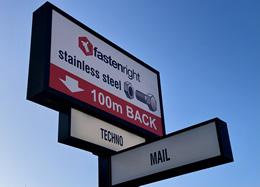




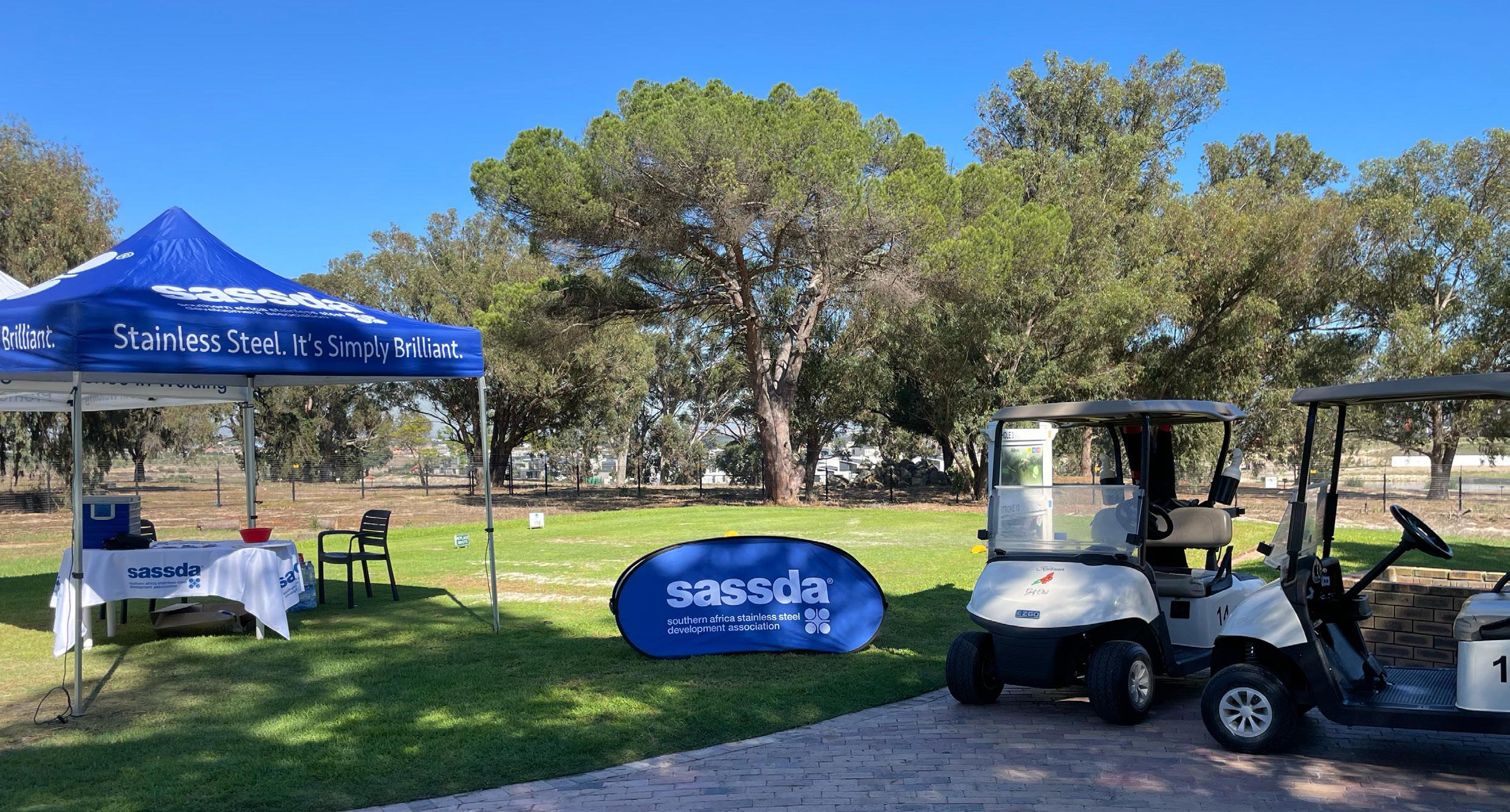
Sassda Western Cape Golf Day Drives Industry Connections
Sassda’s Western Cape Golf Day at Kuils River Golf Course was much more than a relaxed afternoon of golf. It served as a well-organised platform for industry engagement, bringing together 80 players across 14 sponsored holes in an event that ran seamlessly and wrapped up before sundown.
The energy carried into the evening, where nearly 100 guests gathered for dinner, creating the perfect setting to continue conversations and turn introductions into meaningful business connections. Sassda’s own 4-ball, featuring key prospective members such as QP Laser and Enchore, highlighted the association’s focus on building longterm partnerships within the sector.
Sponsors, particularly those participating for the first time, gave overwhelmingly positive feedback, noting the quality of engagement and the number of valuable contacts made throughout the day. Each player also received a custom pitch repairer, 90 in total, crafted and sponsored by QP Laser. These personalised items were not only practical gifts but also thoughtful tokens of the day’s success.



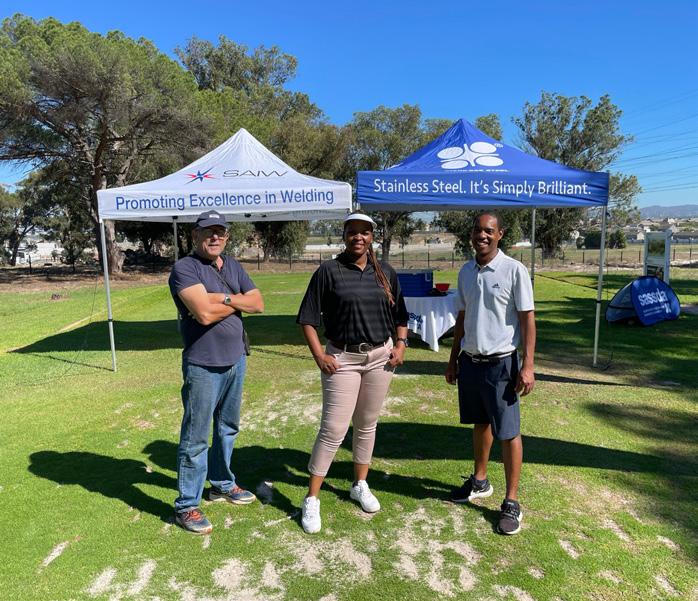
All eyes now turn to Durban, where the next Golf Day takes place on 12 June with a shotgun start. If the Western Cape event set the benchmark, KwaZulu-Natal is well placed to deliver another exceptional experience.
